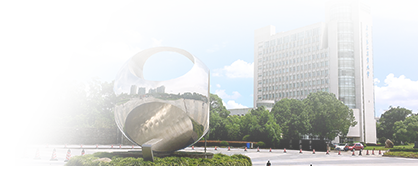Recently, the young teachers of CAMS & PUMC have published a series of lectures in ACS Energy Letter (JCR Zone 1, CAS Zone 1, Top). If = 18.2) Co-authored and published a research paper entitled Reducing Inter-grain Gaps to Stabilize the Outdoor Operation of Perovskite Solar Modules, Wang Xin is the first corresponding author of the paper, and Professor Zhao Xiaoming of Nanjing University of Aeronautics and Astronautics is the co-corresponding author of the paper.
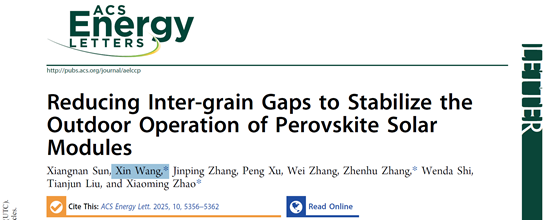
Brief Introduction:
Grain boundary voids and interface delamination driven by environmental stresses are key issues affecting the long-term outdoor operation stability of perovskite solar cells. A grain boundary polymerization strategy using dimethyl itaconate (DMI) monomers was developed to reduce the intergrain gap in perovskite films. The reduced intergrain gap effectively alleviates void and interface delamination within the device body and inhibits migration of mobile ions from the perovskite layer. A photoelectric conversion efficiency of 25.9% (certified efficiency of 25.24%) was achieved on a laboratory small cell of 0.09 cm ² and an efficiency of 19.2% on an industrial scale solar module of 30 cm by 30 cm. The packaged assembly maintained 93% and 94% of its initial efficiency after 2000 hours and 3000 hours under humid and hot conditions and maximum power point tracking tests, respectively, Is one of the most stable industrial scale solar modules reported so far. Importantly, these packaged components demonstrated a stable power output during 25 days of outdoor operation, demonstrating their viability for practical applications.
Link to the article: Https: / / pubs.acs.org / doi / 10.1021 / acsenergyet.5c01711
In-depth reading:
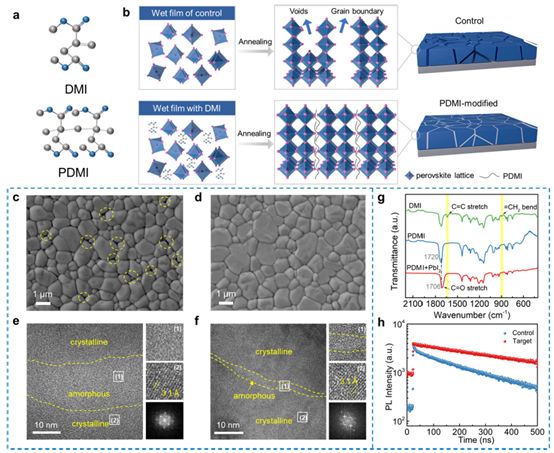
Fig. 1. (A) molecular structure of DMI and PDMI; (b) schematic diagram of PDMI in situ polymerization process during perovskite film formation; (c) top-down SEM images of control and (d) target perovskite films; Hrtem and FFT analysis of (e) control and (f) target perovskite films, (g) FTIR spectra of DMI monomer, PDMI and PBI-CPDMI powders; Time-resolved photoluminescence (PL) spectra of control and target perovskite films.
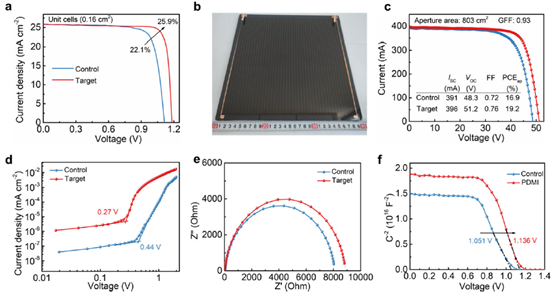
Fig. 2. (A) J-V characteristic curve of a championship control versus target perovskite solar cells (PSCs), (b) physical diagram of a 30 cm by 30 cm perovskite solar module; (C) the I-V characteristic curve of the championship target perovskite solar module, (d) the dark current curve of the contrast and target device, (e) the Nyquist diagram of the contrast and target PSCs under dark conditions; And (f) Mott-Schottky (M-S) curves against target PSCs.
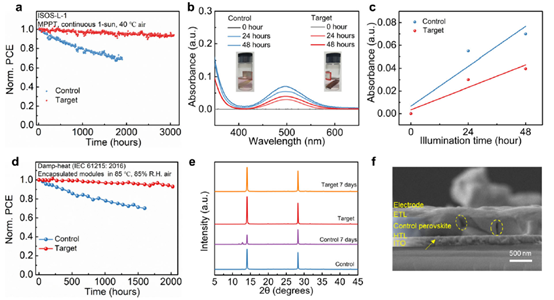
Fig. 3. (A) Operational stability of maximum power point tracking of the encapsulated control and target solar module under continuous illumination in air at 40 ° C; And (b) the ultraviolet-visible absorption spectrum of the toluene solution after the control and the target film were immersed for 48 hours under one sun. The inset is a photograph of the sealed sample vial containing the film after 48 hours of illumination; (c) UV-Vis absorbance of the control and target film as a function of illumination time; And (d) the relationship between aging time and normalized efficiency (PCE) of the packaged solar module at 85% RH and 85 ° C; (E) XRD pattern evolution of control and target perovskite films stored for 7 days at 85.d egree. C. dark conditions; and (f) SEM images of cross-sections of the control device after 7 days of storage at 85.d egree. C.
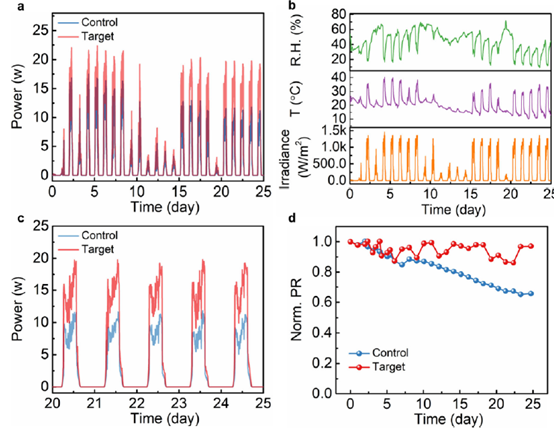
Fig. 4. (A) Power output of a package control and target assembly under true outdoor conditions (ISOS-O-2), (b) corresponding irradiance, temperature and relative humidity conditions; (C) power output of the packaged control and target components within the last 5 days of outdoor exposure selected data; and (d) normalized performance ratios of the control and target components during 25 days of outdoor testing.
